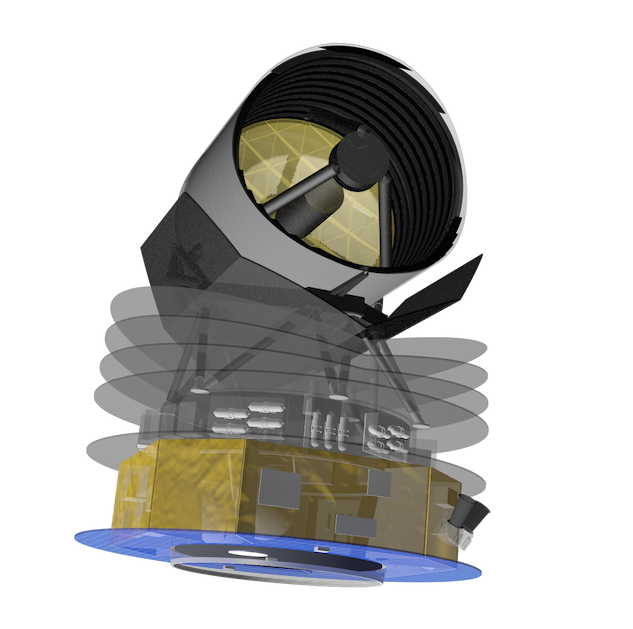De ruimteagentschappen ESA en JAXA hebben samen besloten om de Europees-Japanse infraroodtelescoop SPICA uit de competitie voor ESA’s vijfde middelgrote missie (M5) te halen. SPICA behoorde tot de laatste drie kandidaten voor M5, als onderdeel van ESA’s Cosmic Vision-programma. Hoewel de laatste beoordeling aantoonde dat de ruimtemissie in technisch opzicht goed haalbaar is, hebben ESA en JAXA besloten dat de missie te kostbaar wordt om door te gaan met de ontwikkeling.

SPICA drong ruim twee jaar geleden door tot de laatste selectieronde voor M5, waarvoor meer dan 30 missies in de race waren. Sindsdien heeft het SPICA-consortium onder leiding van SRON haar missievoorstel verder uitgewerkt. SPICA zou de ontstaansgeschiedenis van het heelal en de evolutie van sterrenstelsels in kaart gaan brengen, van tien miljard jaar geleden tot nu. Bovendien willen astronomen de omstandigheden bestuderen waaronder planetaire systemen ontstaan die lijken op ons eigen zonnestelsel. Infraroodstraling is daarvoor geschikt omdat het dwars door ruimtestof heenvliegt, terwijl bijvoorbeeld zichtbaar licht dan juist wordt geblokkeerd.
SPICA zou drie instrumenten aan boord hebben. Een Europees consortium onder leiding van SRON zou de ver-infraroodspectrometer SAFARI maken, Japan zou een combinatie van een mid-infraroodcamera en spectrometer ontwikkelen, en Frankrijk leidde een Europees samenwerkingsverband dat een ver-infraroodcamera en polarimeter voorbereidde.
De twee overgebleven kandidaten voor de M5-missie zijn nu de EnVision-missie naar Venus en de Transient High-Energy Sky and Early Universe Surveyor (THESEUS). Volgens de huidige planning wordt de M5-missie in 2032 gelanceerd.
Klik hier voor het persbericht van ESA.
Costs too high for space telescope SPICA
The space agencies ESA and JAXA have decided to take SPICA, the joint European-Japanese infrared space telescope, out of the competition for ESA’s fifth medium class mission (M5). SPICA was one of the three candidates for the M5 mission, which is part of ESA’s Cosmic Vision program. Although a last review has shown that the mission is technically feasible, the two agencies decided that the costs were going to be too high to continue with the project.
Since SPICA made it to the last M5 selection round around two years ago, out of more than 30 contenders, the SRON-led SPICA consortium has been further developing the mission concept. SPICA was aimed at the study of galaxy evolution and star-formation over cosmic time, looking back in time for as far as ten billion years. Astronomers also intended to use SPICA to study the conditions for the birth of planetary systems like our own solar system. The best way to do this is to study the universe in infrared light because infrared radiation travels freely through space dust where for example visible light is blocked.
SPICA was going to carry three instruments. A European consortium led by SRON has been developing the far-infrared spectrometer SAFARI. Japan has been developing a mid-infrared camera and spectrometer, and a French led European collaboration developed a far-infrared camera and polarimeter.
The two remaining candidates for M5 are now the EnVision mission to Venus and the Transient High-Energy Sky and Early Universe Surveyor (THESEUS). The M5 mission has a planned launch date in 2032.
Click here for ESA’s press release.


